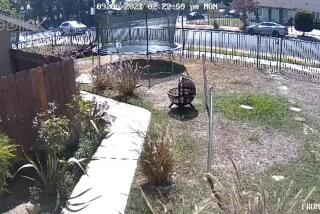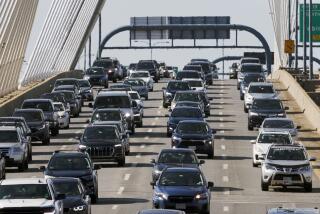Inadequate Collection and Analysis of Accident Data Prove Costly
- Share via
The great shattering of automobiles across the country every year is a complex and poorly understood puzzle that destroys more than 41,000 lives, injures 5.3 million and wrecks 28 million vehicles.
It has been more than two decades since the federal government began an ambitious effort to help solve the mystery surrounding highway accidents, which carries staggering economic consequences for the U.S., estimated in a recent report at $231 billion annually.
Highways can be made safer only if regulators, state driver licensing agencies, auto makers and highway designers fully understand why accidents happen, but the knowledge of the variables remains sketchy and incomplete.
The inadequacies in the collection and analysis of accident data were a large part of the reason that 270 Americans died in Ford Explorers equipped with Firestone tires before anybody even recognized the enormity of the defect in play. The system for providing early warning was incapable of delivering the message.
“It’s bad,” said Clarence Ditlow, director of the Center for Auto Safety in Washington. “You can’t detect defects. Just take a look at the Ford Explorer and Firestone tires. If the system were good, it should have caught it.”
This system consists of many parts: local police who investigate accidents, state agencies that collect data, federal statisticians who compile massive databases and defect analysts who comb through stacks of information seeking tiny nuggets that reveal trends.
One of the most important parts of the system is the National Automotive Sampling System, or NASS, which investigates a sample of 5,000 crashes across the country each year.
It is operated by the National Center for Statistics and Analysis, part of the National Highway Traffic Safety Administration. (The center also oversees other databases, including the Fatal Accident Reporting System, special crash investigations, safety belt surveys and a system to match accidents with hospital cost data.)
To operate NASS, the center has investigators in 24 cities across the country who pick a sample of accidents--partly at random and partly based on what looks interesting--that occur within their jurisdictions. Within two to five days of some accidents, they go out and talk to the people involved in the crashes, photograph the sites and examine the vehicles in police impoundment lots.
“The purpose is to understand what is happening in crashes,” said Joseph Carra, director of the National Center for Statistics and Analysis. “We can look at what is happening over time.
“In a frontal crash, we look at the speed, whether the head hit the visor, whether passengers were buckled or not buckled, whether the air bag deployed. We can use that data for all sorts of research work. We determine priorities from that.”
But what the sampling did not do, Carra acknowledged, was identify one of the biggest defects in decades in the Ford-Firestone case. Should it have?
“I hesitate to answer that,” he said. “It is not a simple yes-or-no answer. To show a specific problem like Ford-Firestone from the data is asking too much. It is very hard to notice even when you are looking for it.”
Critics outside the agency say NASS is a shadow of what was originally envisioned when it was launched in the late 1970s.
Carl Nash, adjunct professor at George Washington University and a former federal safety regulator, said NASS was originally intended to collect data from 18,000 crashes each year with 75 teams across the country. When he took over the system in 1980, it had 50 teams and was still growing, he said.
With data from 18,000 crashes, it would have been possible to collect information on 50 crashes for every model vehicle within the first year of production, Nash said, providing manufacturers with “a lot of insight before design began of the next generation of the model.”
But in the Reagan administration’s downsizing of government, NASS was cut to 36 teams by the mid-1980s and then 24 teams by the early 1990s, Nash said. In the process, data collections dropped to just 5,000 a year.
“We are driving blind, because we don’t have enough information to know when we have a problem like Ford-Firestone,” Nash said. “It is a national disgrace and tragedy.”
Said Ditlow, the director of the Center for Auto Safety: “The number of cases they look into is only one-third of what everybody agrees is a valid sample.”
Nash estimates that it would cost $20 million to get the additional data, a small cost compared with the “$20 billion we spend for the National Institutes of Health to investigate diseases that don’t kill any more people than die in car crashes.”
Of course, the NIH operates within a medical establishment that considers it an ally, whereas NHTSA regulates an industry that generally regards it as an enemy.
Carra acknowledged that NASS was originally intended to collect more data and that the smaller database is less useful.
“In general terms, it compromises our ability to do analysis, because you have smaller sample size,” he said. “If you do have a problem, it takes you longer to identify it or you can’t see it at all.
“Would we like to have more cases? Absolutely. More resources would give us more cases.”
It costs about $10 million a year to run NASS’ most important database: the crashworthiness data system. Tripling the collections to 15,000 cases would cost $20 million to $30 million, Carra said.
Even if NASS collected more data, it probably could not have identified the Ford-Firestone problem, because of other shortcomings. Until the problem became known, NASS did not even collect data on tire blowouts. Fortunately, that has been addressed and NASS now has data on tire blowouts.
*
Next week, I’ll examine the quality of the data flowing into the federal government’s databases from local police agencies.
Ralph Vartabedian cannot answer mail personally but responds in this column to automotive questions of general interest. E-mail: ralph.vartabedian@latimes.com.







